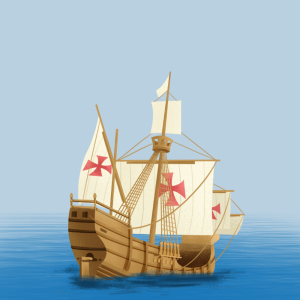
- Podcast Features
-
Monetization
-
Ads Marketplace
Join Ads Marketplace to earn through podcast sponsorships.
-
PodAds
Manage your ads with dynamic ad insertion capability.
-
Apple Podcasts Subscriptions Integration
Monetize with Apple Podcasts Subscriptions via Podbean.
-
Live Streaming
Earn rewards and recurring income from Fan Club membership.
-
Ads Marketplace
- Podbean App
-
Help and Support
-
Help Center
Get the answers and support you need.
-
Podbean Academy
Resources and guides to launch, grow, and monetize podcast.
-
Podbean Blog
Stay updated with the latest podcasting tips and trends.
-
What’s New
Check out our newest and recently released features!
-
Podcasting Smarter
Podcast interviews, best practices, and helpful tips.
-
Help Center
-
Popular Topics
-
How to Start a Podcast
The step-by-step guide to start your own podcast.
-
How to Start a Live Podcast
Create the best live podcast and engage your audience.
-
How to Monetize a Podcast
Tips on making the decision to monetize your podcast.
-
How to Promote Your Podcast
The best ways to get more eyes and ears on your podcast.
-
Podcast Advertising 101
Everything you need to know about podcast advertising.
-
Mobile Podcast Recording Guide
The ultimate guide to recording a podcast on your phone.
-
How to Use Group Recording
Steps to set up and use group recording in the Podbean app.
-
How to Start a Podcast
-
Podcasting
- Podcast Features
-
Monetization
-
Ads Marketplace
Join Ads Marketplace to earn through podcast sponsorships.
-
PodAds
Manage your ads with dynamic ad insertion capability.
-
Apple Podcasts Subscriptions Integration
Monetize with Apple Podcasts Subscriptions via Podbean.
-
Live Streaming
Earn rewards and recurring income from Fan Club membership.
-
Ads Marketplace
- Podbean App
- Advertisers
- Enterprise
- Pricing
-
Resources
-
Help and Support
-
Help Center
Get the answers and support you need.
-
Podbean Academy
Resources and guides to launch, grow, and monetize podcast.
-
Podbean Blog
Stay updated with the latest podcasting tips and trends.
-
What’s New
Check out our newest and recently released features!
-
Podcasting Smarter
Podcast interviews, best practices, and helpful tips.
-
Help Center
-
Popular Topics
-
How to Start a Podcast
The step-by-step guide to start your own podcast.
-
How to Start a Live Podcast
Create the best live podcast and engage your audience.
-
How to Monetize a Podcast
Tips on making the decision to monetize your podcast.
-
How to Promote Your Podcast
The best ways to get more eyes and ears on your podcast.
-
Podcast Advertising 101
Everything you need to know about podcast advertising.
-
Mobile Podcast Recording Guide
The ultimate guide to recording a podcast on your phone.
-
How to Use Group Recording
Steps to set up and use group recording in the Podbean app.
-
How to Start a Podcast
-
Help and Support
- Discover

1493 by Charles C. Mann is a historical book that explores the global effects of Christopher Columbus's discovery of the Americas in 1492. The book examines the various ecological, cultural, and economic changes that occurred as a result of the Columbian Exchange, which was the exchange of plants, animals, diseases, and ideas between the Old World (Europe, Africa, and Asia) and the New World (the Americas).
Mann argues that the Columbian Exchange was a transformative event in human history, as it led to the integration of previously isolated regions and changed the global balance of power. The book discusses the impact of the exchange of crops and agricultural techniques, such as the introduction of maize and the potato from the Americas into Europe, which revolutionized the Old World's food production and population growth.
Furthermore, Mann explores the negative consequences of the exchange, such as the introduction of diseases, like smallpox, into the New World, which decimated indigenous populations. He also discusses the forced labor and exploitation of indigenous peoples by European colonizers and the establishment of the transatlantic slave trade.
Another significant aspect of the book is the analysis of the environmental consequences of the Columbian Exchange. Mann discusses how the transfer of plants and animals across the globe led to environmental degradation, deforestation, and the extinction of certain species. He emphasizes the long-lasting impact of these changes on global ecosystems.
In addition, Mann examines the cultural and intellectual exchanges that occurred during this time period. He discusses the impact of the exchange of knowledge, ideas, and technologies on the scientific and intellectual development of both the Old World and the New World.
Overall, 1493 provides a comprehensive and thought-provoking analysis of the far-reaching consequences of Columbus's voyage and the subsequent exchange of goods, ideas, and people between the continents. The book highlights the interconnectedness of different regions and emphasizes the complex and often devastating effects of this historical event.
Chapter 2:the meaning of 1493 bookThe book "1493" by Charles C. Mann explores the global impacts of the year 1493, particularly focusing on the consequences of Christopher Columbus's arrival in the Americas. It delves into the environmental, agricultural, economic, and cultural transformations that occurred as a result of the encounter between the Old and New Worlds. Mann argues that this period was a turning point in history, as it shaped the modern world through the exchange of goods, diseases, ideas, and people. The book presents a comprehensive analysis of the long-term effects of Columbus's voyages and their profound influence on both Europe and the Americas.
Chapter 3:1493 book chaptersChapter 1: "The Taino and the Tartars"
In this chapter, Mann discusses the pre-Columbian societies in the Americas, particularly the Taino people of the Caribbean and the Tartars of Europe and Asia. He highlights their similarities in terms of cultural development, agricultural practices, and societal structure.
Chapter 2: "The Indian Problem"
Mann explores the impact of European colonization on the indigenous peoples of the Americas. He discusses the diseases brought by the Europeans, particularly smallpox, which decimated the native populations. He also examines the different approaches to colonization taken by the Spanish, Portuguese, and English.
Chapter 3: "Around the World"
This chapter focuses on the historical context of the 15th century, leading up to Columbus's voyage to the Americas. Mann explores the European exploration of Africa and Asia, the development of maritime technology, and the role of Portugal in pushing the boundaries of exploration.
Chapter 4: "A Compass and an Echo"
Mann delves into the encounters between Native Americans and European explorers, focusing on the interactions between Columbus and the Taino people. He discusses the exchange of goods, ideas, and diseases, as well as the misconception and misinterpretation of each other's cultures.
Chapter 5: "Giving Good Gifts"
This chapter centers on the cultural clash between European and Native American societies. Mann examines the concept of "gift-giving" as a form of cultural communication and explores how the exchange of gifts often led to misunderstanding and conflict between the two groups.
Chapter 6: "Conquest"
In this chapter, Mann examines the rapid conquest and colonization of the Americas by the Europeans. He discusses the military tactics employed by the Spanish, Portuguese, and English, as well as the motivations behind their conquests. He also explores the impacts of colonization on the native populations and the land.
Chapter 7: "A Quick and Easy Transfer"
Mann discusses the transfer of plants, animals, and diseases between the Old World and the New World. He explores the Columbian Exchange and its profound impact on both European and Native American societies. He also examines the ecological consequences of the exchange and how it shaped the development of the Americas.
Chapter 8: "Laws of the Indies"
This chapter focuses on the Spanish colonization of the Americas and the establishment of colonial laws. Mann discusses the encomienda system, the role of the Catholic Church, and the ways in which the Spanish sought to control and exploit the native populations.
Chapter 9: "Hemispheres Colliding"
Mann explores the impact of European colonization on the landscape, environment, and native cultures of the Americas. He discusses the deforestation, introduction of new crops, and changes in land use brought about by European settlers. He also examines the resilience and adaptation of Native American cultures in the face of these changes.
Chapter 10: "Change in the Countryside"
In this chapter, Mann examines the impact of European colonization on the rural societies of the Americas. He discusses the introduction of new agricultural practices and technologies, the transformation of indigenous farming systems, and the cultural changes brought about by European colonization.
Chapter 11: "Confluence"
Mann explores the cultural and biological mixing that occurred between Europeans, Africans, and Native Americans in the Americas. He discusses the formation of new racial and cultural identities, as well as the debates and conflicts surrounding race and identity during this period.
Chapter 12: "After the Fact"
The final chapter reflects on the lasting legacy of Columbus's voyages and European colonization in the Americas. Mann discusses the ongoing debates and controversies surrounding Columbus's achievements, as well as the complex and multifaceted legacies of European conquest and Native American resistance.
Chapter 4: Quotes of 1493 book- "We came across a land so vast and rich that we almost lost our breath in astonishment."
- "The beauty of this new world is beyond words. It is the closest thing to paradise I have ever seen."
- "The indigenous people we encountered are unlike any we have ever known. They have a deep connection with nature and live in harmony with their surroundings."
- "The sheer abundance of resources is mind-boggling. There are countless trees, fruits, and animals, all waiting to be discovered and utilized."
- "The natives are curious and friendly, offering us gifts and showing us their way of life. We are in awe of their hospitality."
- "However, their vulnerability to diseases brought by our presence is a harsh reality. Many have fallen ill and succumbed to sickness."
- "We must remember that with the privilege of exploration comes the responsibility to protect and respect the lands and peoples we encounter."
- "Our journey has opened our eyes to the vast possibilities of this new world. It is a land ripe with potential for trade, colonization, and growth."
- "The ancient civilizations we have encountered, such as the Aztecs and Incas, possess knowledge and skills far beyond our comprehension."
- "As we leave this land, we carry with us the memories of a journey that will forever be etched in our minds. We have paved the way for future generations of explorers."
More Episodes
 2024-09-06
2024-09-06
 55
55
 2024-09-02
2024-09-02
 36
36
 2024-08-30
2024-08-30
 51
51
 2024-08-30
2024-08-30
 33
33
 2024-08-28
2024-08-28
 22
22
 2024-08-28
2024-08-28
 23
23
 2024-08-27
2024-08-27
 31
31
 2024-08-27
2024-08-27
 17
17
 2024-08-26
2024-08-26
 26
26
 2024-08-26
2024-08-26
 42
42
Create your
podcast in
minutes
- Full-featured podcast site
- Unlimited storage and bandwidth
- Comprehensive podcast stats
- Distribute to Apple Podcasts, Spotify, and more
- Make money with your podcast
It is Free
- Privacy Policy
- Cookie Policy
- Terms of Use
- Consent Preferences
- Copyright © 2015-2025 Podbean.com




